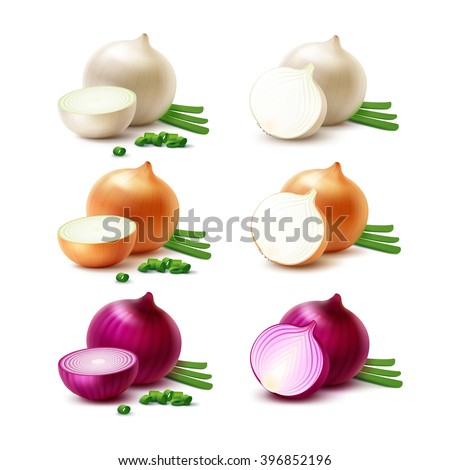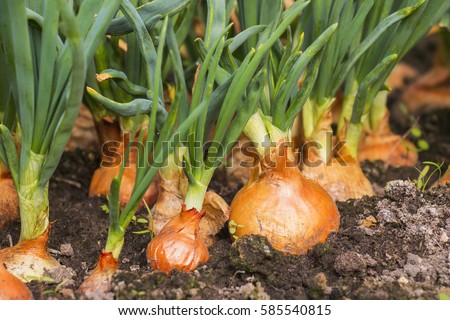There are a number of onion types that come in white, yellow and red. Size-wise, they can range from tiny pickling onions to large Spanish cultivars. They can be shaped like a globe, a top or a spindle. It's said that the sweetest varieties are flatter, or rather like an oval with the stem on top. According to Rodale's Organic Life, onion varieties include a perennial bunching type of scallions, called Allium fistulosum, that are practically disease free and insect proof.
And a "multiplier" potato onion from the A. cepa Aggregatum group develops a bulb cluster, so every time you harvest them, you have bulbs to replant for a virtually limitless supply. When you get your onion transplants, try to get them into the ground as quickly as possible. If you can't plant due to rain or whatever, spread them out in a cool, dry area. If they start drying out, it's fine; as members of the lily family of plants, they'll live another three weeks. Once planted, they shoot new roots almost immediately.
When planting sets, you have to push the flatter side down into damp soil. Push until the pointed part of the top is showing and 4 or 5 inches apart. Plant as soon as the ground can be worked, and try to make sure the temperature doesn't fall below 20 degrees F. Rows can be planted as close as 12 inches apart or as far apart as 18 inches. Again, planting too deep keeps onions from forming large bulbs.
Always water immediately after planting, and keep them relatively damp as harvest time gets closer. In between, careful weeding so that foreign plants that are stronger don't choke out what you're trying to grow, especially when plants are young, is important. It may be extremely tempting to put dirt on top of forming onion bulbs, but don't! When you see onion bulbs that appear to be lying there, lifeless, remember that their roots are still underground getting the nutrients they need.
You'll know bulb onions are ready when their tops fall over. It's a natural indication that they're fully mature. Then, pull them up, allow them to dry, separately, clip the roots and cut all but about an inch off the tops. Keep them cool and dry for storage. More pungent onions store longer; sweeter onions need to be used up sooner.
Article Source: mercola.com
And a "multiplier" potato onion from the A. cepa Aggregatum group develops a bulb cluster, so every time you harvest them, you have bulbs to replant for a virtually limitless supply. When you get your onion transplants, try to get them into the ground as quickly as possible. If you can't plant due to rain or whatever, spread them out in a cool, dry area. If they start drying out, it's fine; as members of the lily family of plants, they'll live another three weeks. Once planted, they shoot new roots almost immediately.
When planting sets, you have to push the flatter side down into damp soil. Push until the pointed part of the top is showing and 4 or 5 inches apart. Plant as soon as the ground can be worked, and try to make sure the temperature doesn't fall below 20 degrees F. Rows can be planted as close as 12 inches apart or as far apart as 18 inches. Again, planting too deep keeps onions from forming large bulbs.
Always water immediately after planting, and keep them relatively damp as harvest time gets closer. In between, careful weeding so that foreign plants that are stronger don't choke out what you're trying to grow, especially when plants are young, is important. It may be extremely tempting to put dirt on top of forming onion bulbs, but don't! When you see onion bulbs that appear to be lying there, lifeless, remember that their roots are still underground getting the nutrients they need.
You'll know bulb onions are ready when their tops fall over. It's a natural indication that they're fully mature. Then, pull them up, allow them to dry, separately, clip the roots and cut all but about an inch off the tops. Keep them cool and dry for storage. More pungent onions store longer; sweeter onions need to be used up sooner.
Article Source: mercola.com



